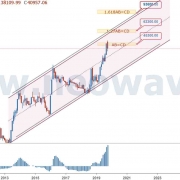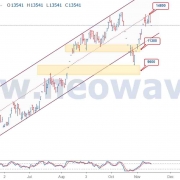(98) New Tips & Hints
Many believe the stock market, particularly since 1987 (and most certainly from 2003 to 2007) has been manipulated. Wouldn’t that manipulation impact proper Elliott and NEoWave pattern developement? How do you compensate for that influence?
ANSWER:
This is a strange question since it involves speculation in the first sentence that is later assumed to be fact in the second and third sentences. But the general idea is, “can markets be manipulated and if/when they are does it impact wave structure and, therefore, one’s ability to forecast.”
First, the world’s primary markets (currencies, Bonds, the stock indices of most industrialized countries, etc.) are too large to manipulate. To manipulate the Euro currency or U.S. stock market would require trillions of dollars. No one person or group has that kind of money. Individual stocks can be manipulated, but wave theory (as a result) does not work well with individual stocks.
Second, wave theory measures and quantifies MASS psychology, not limited or individual psychology. As a result, it only works well when applied to large, man-made markets where thousands or millions of people are financially interacting. The smaller a market, the less its behavior represents mass psychology. If someone attempts to manipulate a small-cap stock or futures contract, they might be able to accomplish their goal, at least for short periods. On the other hand, such manipulation is likely to make wave structure indecipherable. So, for those practicing wave theory (at least NEoWave), they won’t be able to decipher structure so they won’t be able to trade, thereby avoiding the victimization intended through manipulation.
Individual stocks can be manipulated, but if a person or group focuses their money on a stock or industry, the money pushing up their chosen equity must be pulled from another area or industry, creating a yen-yang balancing effect in the overall stock market average.
Finally, even if someone had trillions of dollars to move into or out of a market, they could not do so without having a serious upward impact on price as they entered and a serious downward effect on price as they exited. Frequently, when such manipulation is attempted (in any market), the mere act of entering and exiting causes a loss for the person taking the position. I experienced this about 10 years ago when I was managing a multi-million dollar Australian fund. I was confident the S&P was about to collapse (which it did a few days later), so I got greedy and started trading the S&P futures 300 contracts at a time in the overnight market. At the time, the overnight market was not liquid. I entered my 300 lot Short position at the market and was immediately filled. Ten seconds later I entered a 300 lot buy-stop 10 points above the market. In the blink of an eye, my buy-stop was filled and ten seconds later the S&P was back down where I originally went Short. In other words, I WAS the overnight market, trading against myself. I did this 300 lot maneuver 3 times over the next 3 days, losing each time, before I realized I could not take such a large position in an illiquid market. Thereafter, I limited trading to liquid U.S. market trading hours only. Today, trading such volume is not an issue in the “overnight” S&P, but 10 years ago it was.
What can we learn from my experience? Simply having large sums of money to trade does not mean you will automatically profit from or “manipulate” a market. Frequently, the “manipulator” becomes the financial victim, not only through big losses but due to high commissions, also.











دیدگاه خود را ثبت کنید
تمایل دارید در گفتگوها شرکت کنید؟در گفتگو ها شرکت کنید.